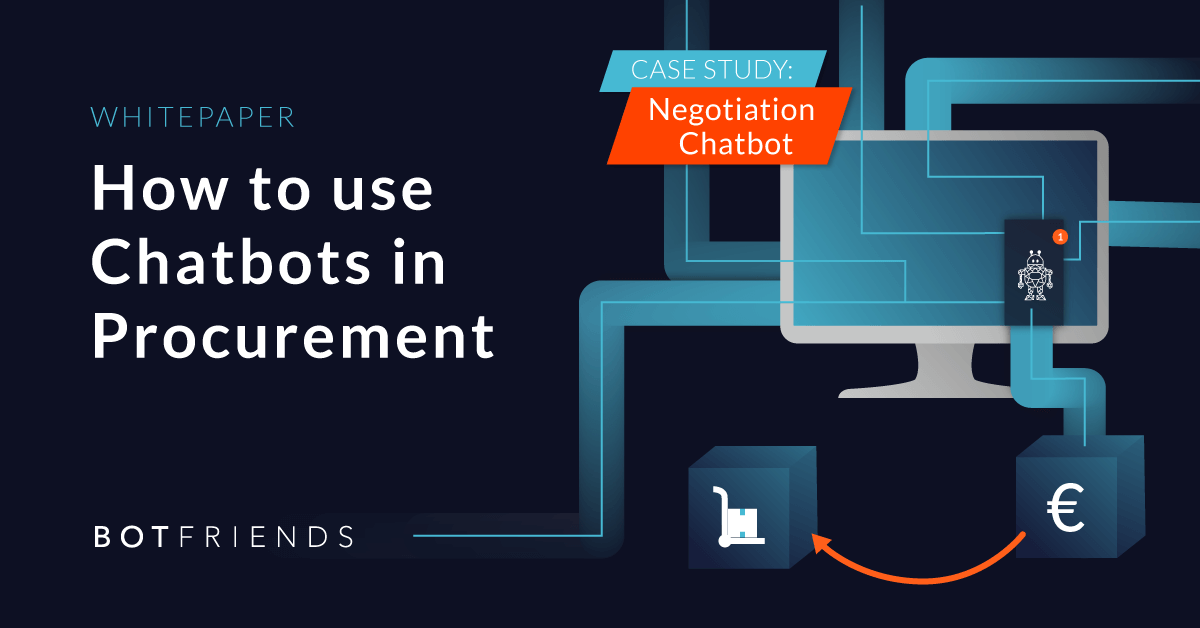In a company, the procurement of materials and services should lie with the purchasing department. But very often, departments order goods on their own and thus unknowingly create a great financial damage.
But why do employees order past the purchasing department and how can this be prevented?
In this blog article you will learn
- Why employees order goods on their own
- what consequences this has for companies
- and how automated ordering processes and chatbots help prevent maverick buying
Why do employees order past the purchasing department?
There are various reasons for this behavior. However, they can usually be traced back to two causes: Ignorance or dissatisfaction.
Employees often want to take advantage of savings offers and thus even help the company. However, in contrast to purchasing, they are only partially able to make price comparisons and negotiate the best conditions.
In addition, they often do not know that there are already existing framework contracts for certain goods. In these contracts, the purchasing department has often negotiated special conditions or additional services. These can then no longer be exploited.
Or, they don't consider the order to be that important ("It's just a laptop") and are unaware of the implications of their behavior.
But what causes them to skip purchasing out of dissatisfaction or get involved too late?
No fixed contact person in the purchasing department
If the departments don't know who to contact, it can quickly happen that they prefer to take care of the order themselves. The same can also happen if their contact person is hard to reach or takes a long time to respond.
The ordering process is too complicated and not very suitable for everyday use
If an ordering process is complex, it is tempting to bypass it and place an order on your own. For example, when forms need to be filled out but are not centrally accessible. Searching for these forms costs employees valuable time. Or they have to enter information, such as supplier numbers, that is stored in different places.
The ordering process is too slow
However, departments may also see the need to override purchasing if the ordering process is too lengthy and slow. Especially in emergency situations, such as a machine breakdown in production, those affected understandably want to have their order processed as quickly as possible.
What are the consequences of Maverick Buying for purchasing?
If department place orders without the purchasing department, this has negative consequences for the company:
Increased costs
The company incurs higher costs because orders are concluded at worse conditions and no comprehensive price comparisons are carried out. In addition, price savings from bundling orders cannot be taken advantage of.
Lack of legal protection
When employees place orders on their own initiative, sometimes no contract is concluded with the supplier. As a result, the company is less protected if the delivery is defective, late or the supplier goes bankrupt.
Lack of transparency in purchasing costs
In the worst case, with maverick buying, no one knows which department bought what, when, at what conditions and at what price. This makes it very difficult for the purchasing department to keep an overview of the costs.
Tense supplier relationship
Framework agreements can be tied to minimum order quantities. However, if the departments now purchase from the competition bypassing the purchasing department, these cannot be fulfilled. This then leads to a strained relationship with the suppliers.
How can Maverick Buying be prevented?
First of all, the departments and employees must be made aware of the consequences of maverick buying for the company.
Then the ordering process should be as easy and efficient as possible. It should be possible for users to follow the specifications even without much prior knowledge. In addition, there should be a fixed contact person who is easy to reach and can respond quickly.
Furthermore, it should be easy for employees to access the necessary information or forms. This makes it easier for employees and departments to comply with the ordering process specified by Purchasing.
How chatbots help employees to handle order processes in accordance with the rules
One way to ensure this is through chatbots. Chatbots are technologies that can answer queries automatically with the help of machine learning. They are also able to accept information from users and store it in databases with the help of RPA. They are suitable for ordering processes for the following reasons:
- You can use the dialog to guide users through the ordering process, ensuring that all the necessary information is provided and that no steps are skipped.
- Users no longer have to search for forms and then fill them out. Instead, the chatbot asks for the information in the dialog and stores it directly in the system.
- If users are missing information, they can ask the chatbot for it and it will find it in real time.
- The ordering process takes place via a dialog. Users therefore need to have very little prior knowledge. The chatbot guides them through the process step by step. If a step is not clear, the chatbot can explain it and help the employee.
- The chatbot is available around the clock and responds in real time. The employees thus have a fixed contact person who can be reached at any time. If the chatbot gets stuck, it can forward the user to an employee via a human handover.
- When chatbots are combined with RPA, ordering processes can be automated. This makes them more efficient and faster.
With a chatbot as a central contact, not only the employees of other departments are supported. The employees in purchasing are also relieved, since standard inquiries are processed by the chatbot. This allows them to concentrate on more complex tasks.
In addition, all information is fed directly into the system and updated automatically. This allows purchasing staff to access better data sets and make decisions based on them.
If you want to learn more about using chatbots in procurement, get white paper "How to use Chatbots in Procurement":




